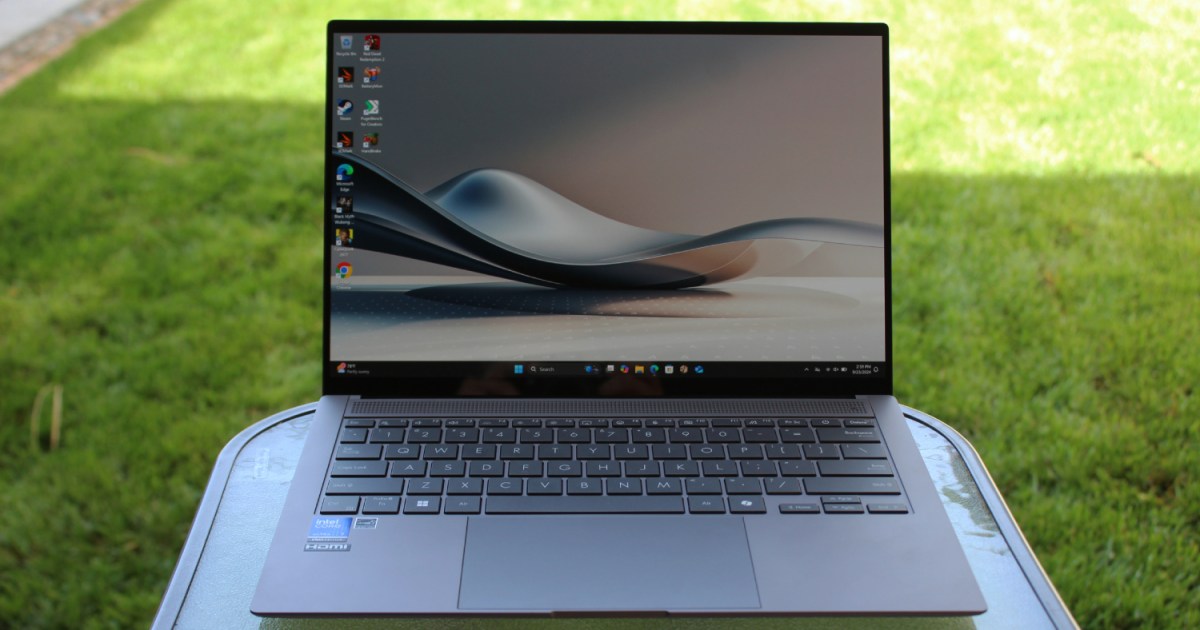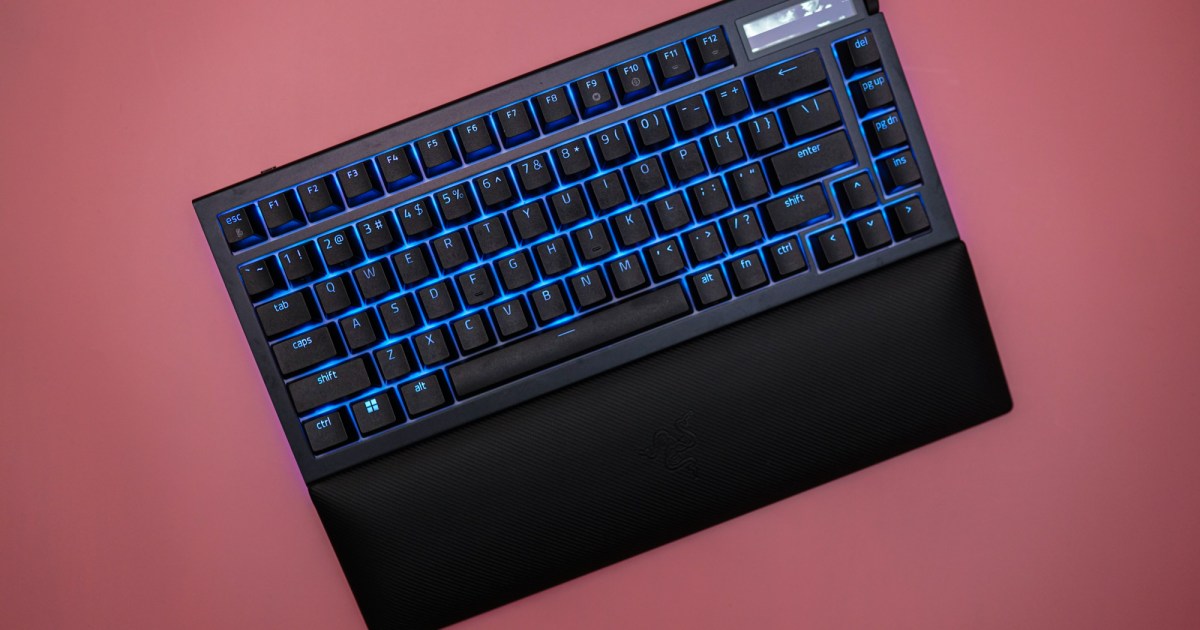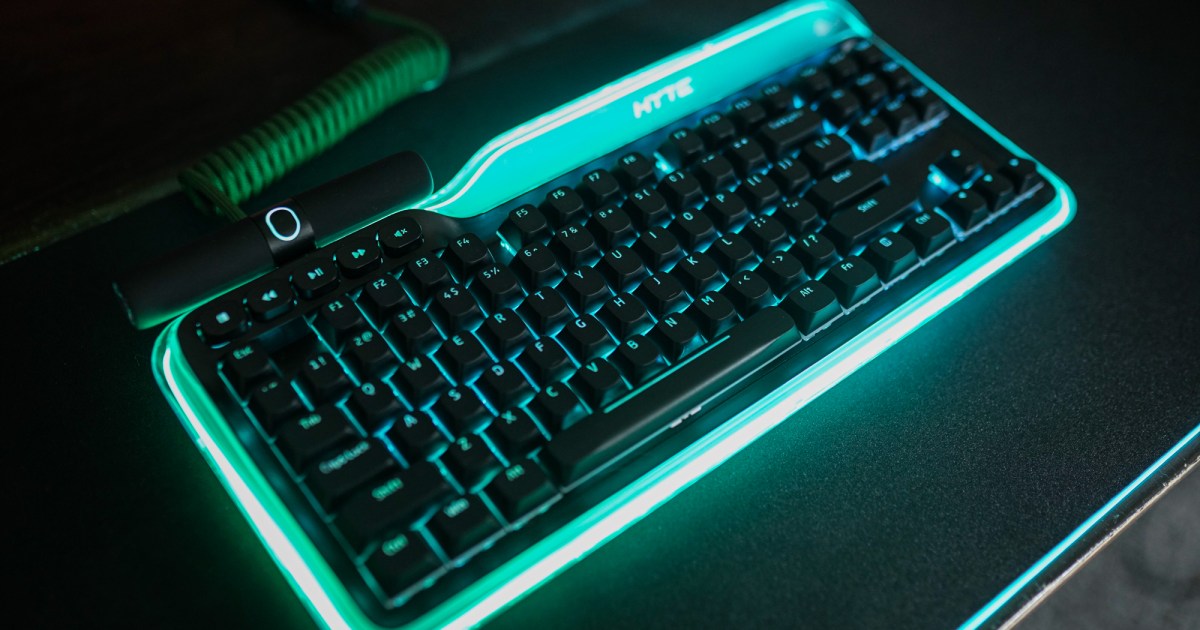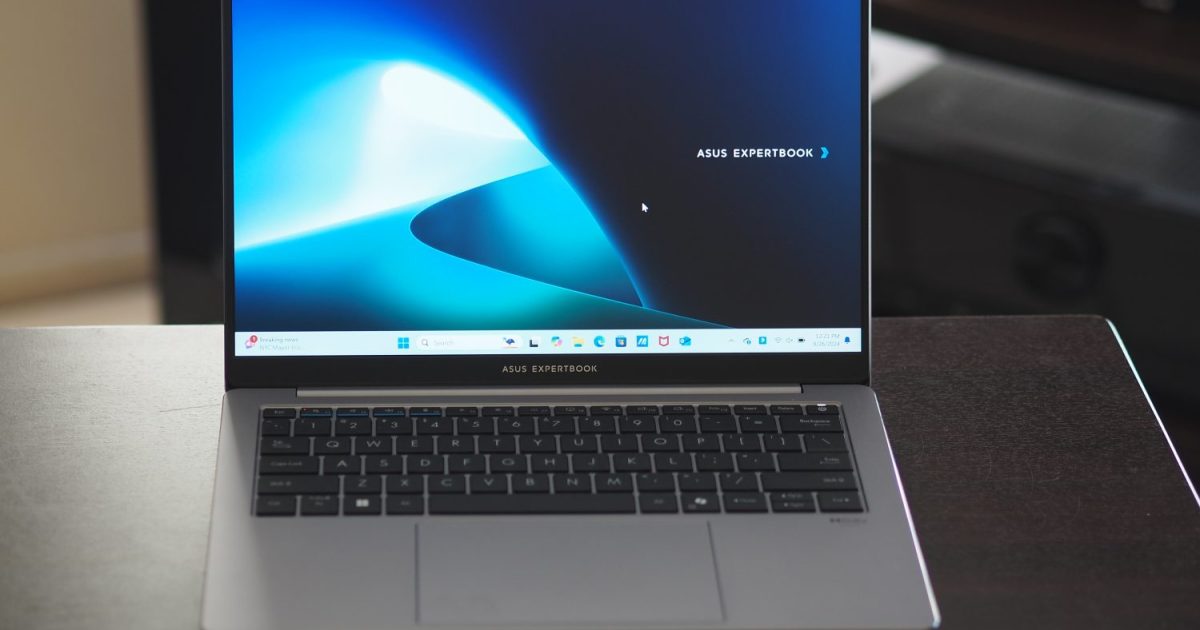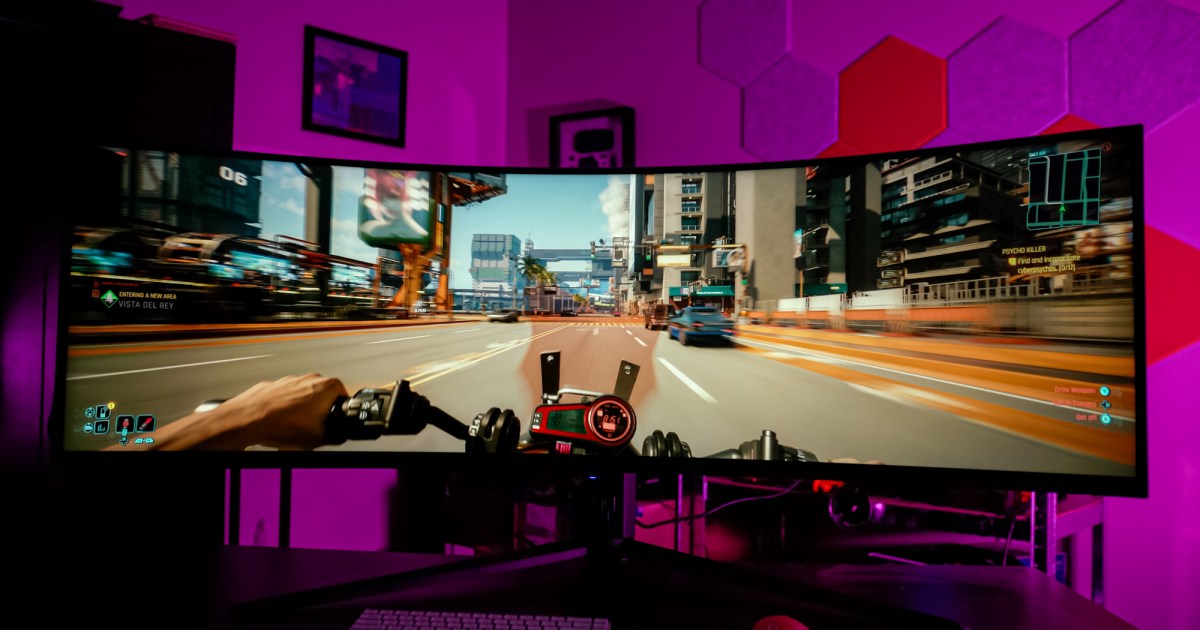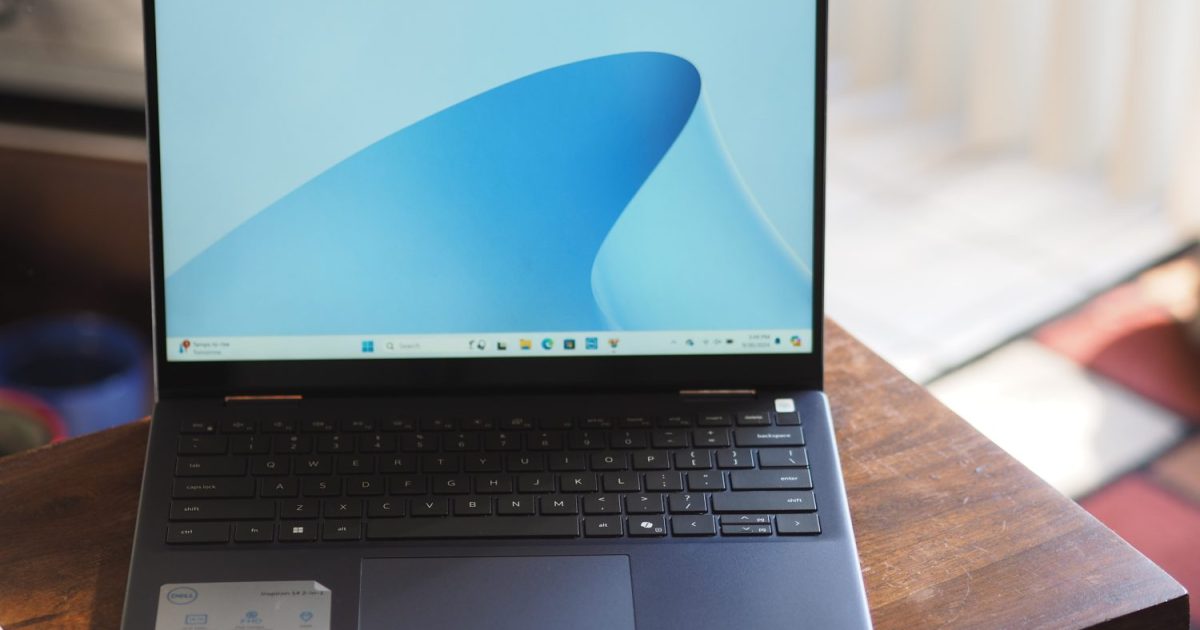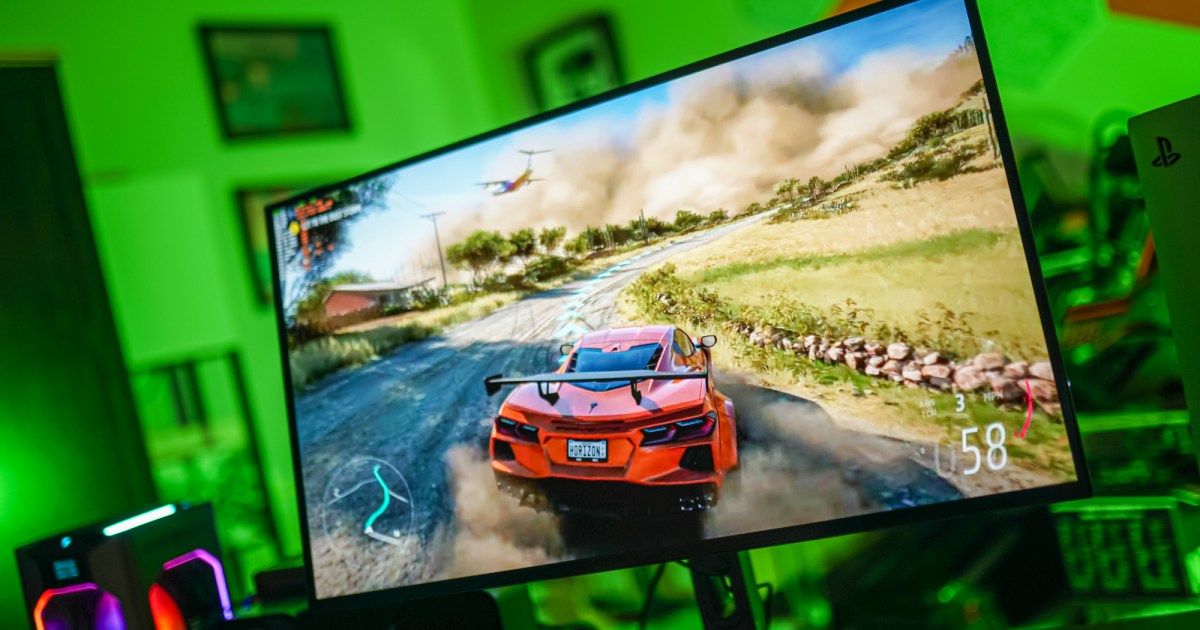The Asus Zenbook S 14 arrives with high expectations, showcasing Intel’s new Core Ultra Series 2 processors (Lunar Lake) against strong competition. With Qualcomm’s Snapdragon X Elite raising the bar for Windows laptop battery life and Apple’s M4 Macs looming large, the Zenbook S 14 aims to secure a top spot among the best laptops available. This review examines its premium design, enhanced integrated graphics, and impressive battery life.
Specifications and Configurations
| Feature | Asus Zenbook S 14 (UX5406SA) |
|---|---|
| Dimensions | 12.22 x 8.45 x 0.47-0.51 inches |
| Weight | 2.65 pounds |
| Display | 14-inch 2.8K OLED 120Hz |
| CPU | Intel Core Ultra 7 258V |
| GPU | Intel Arc 140V |
| Memory | 16GB/32GB LPDDR5X RAM |
| Storage | 1TB M.2 NVMe SSD |
| Ports | 1x USB-A 3.2 Gen 2, 2x Thunderbolt 4, 1x HDMI 2.1, 1x 3.5mm headphone jack |
| Camera | 1080p |
| Wi-Fi | Wi-Fi 7 |
| Bluetooth | Bluetooth 5.4 |
| Battery | 72 watt-hour |
| Operating system | Windows 11 |
| Price | $1399+ |
The reviewed Zenbook S 14 configuration includes the Intel Core Ultra 7 258V, Arc 140V graphics, 32GB of RAM, 512GB of storage, and a 2880 x 1800 OLED display. This specific configuration won’t be available in North America. The closest retail model, starting at $1,500, features 1TB of storage. A 16GB RAM version is also available for $100 less. While RAM is soldered, storage is upgradeable via the M.2 PCIe 4 slot.
This pricing positions the Zenbook S 14 as a premium offering, competing with laptops like the Microsoft Surface Laptop 7th Edition, MacBook Pro 14-inch (M3), and Dell XPS 14. While competitively priced, a more affordable entry-level configuration with 16GB RAM and 512GB storage would enhance its value proposition.
Design
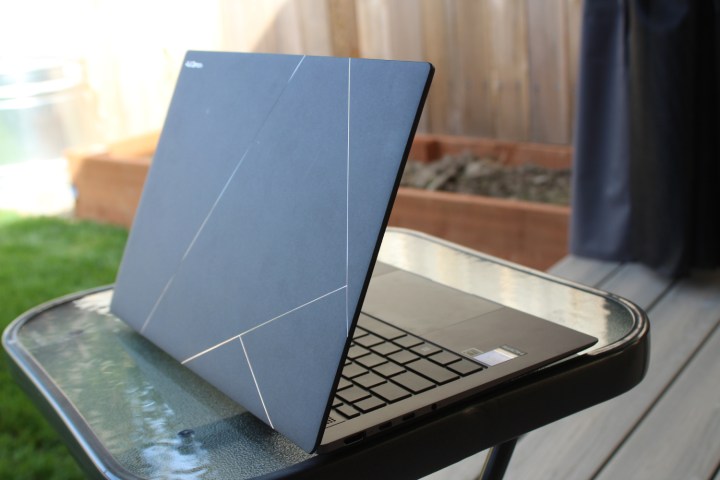 The lid of the Zenbook S 14.
The lid of the Zenbook S 14.
The Zenbook S 14 features “Ceraluminum,” a specially developed aluminum with a ceramic-like finish. This results in a remarkably light yet sturdy build, weighing only 2.65 pounds. The textured lid adds a premium feel, and the overall design is sleek and thin, measuring a maximum of 0.51 inches. The updated Asus logo adds a touch of class. While the review unit was gray, a cleaner white option is also available.
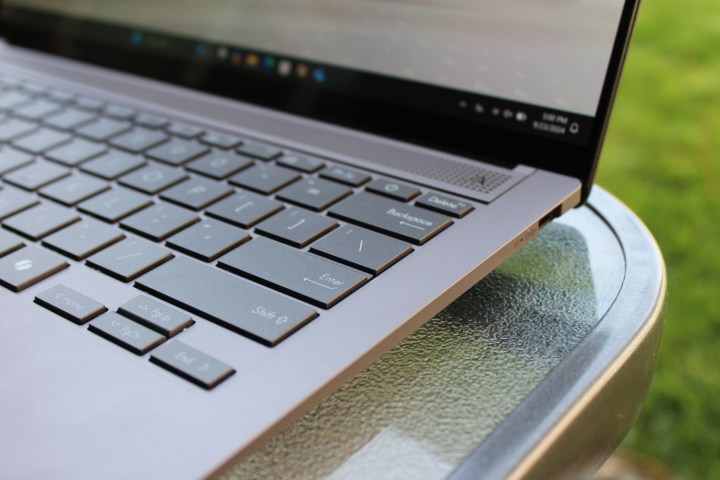 The keyboard of the Asus Zenbook S 14.
The keyboard of the Asus Zenbook S 14.
The sharp, angular design, while visually appealing, could present comfort issues for users with larger hands, particularly due to the vent placement above the keyboard deck. However, the tall rubber feet on the bottom enhance thermals and compensate for the lack of an ErgoLift hinge.
Keyboard and Trackpad
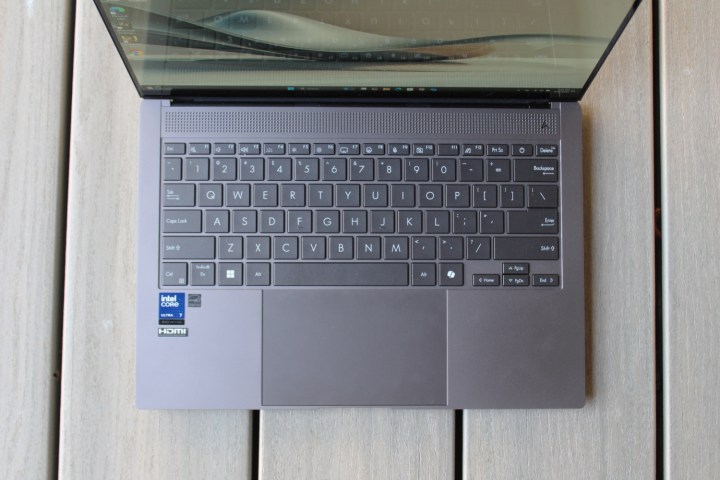 The keyboard and trackpad of the Asus Zenbook S 14.
The keyboard and trackpad of the Asus Zenbook S 14.
The Zenbook S 14’s keyboard offers snappy keystrokes with 1.1mm of travel. While the textured keycaps and palm rests might require a brief adjustment period, they ultimately contribute to a comfortable typing experience. The large trackpad provides smooth navigation, but the click mechanism feels somewhat stiff compared to haptic feedback trackpads found on competing devices. Useful features include brightness and volume control via swipes on the trackpad’s sides. The absence of a fingerprint reader is notable, relying solely on facial recognition for Windows Hello.
Ports
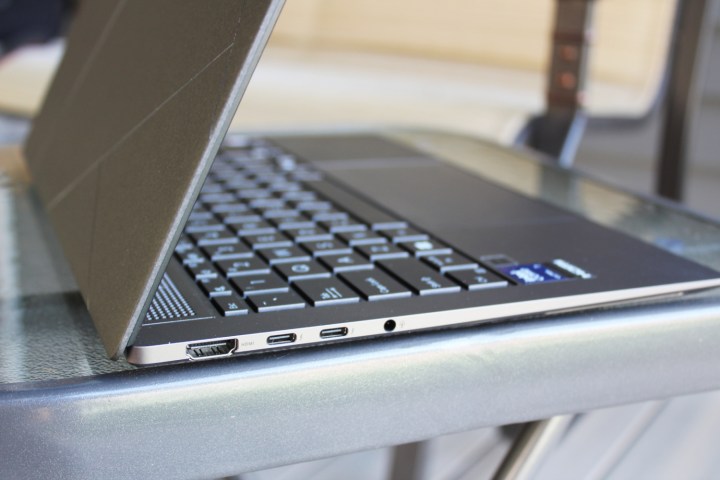 The ports shown on the left side of the Asus Zenbook S 14.
The ports shown on the left side of the Asus Zenbook S 14.
Connectivity is a strong point, with HDMI 2.1, two Thunderbolt 4 USB-C ports, a USB-A 3.2 Gen 2 port, and a headphone jack. Support for two 4K 60Hz external monitors is a welcome feature. The inclusion of USB-A adds practicality. Wireless connectivity is cutting-edge with Wi-Fi 7 and Bluetooth 5.4.
Display
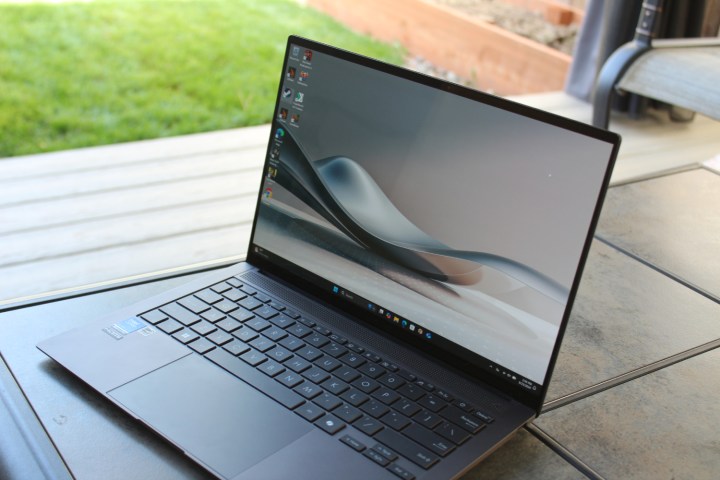 The Zenbook S 14 on a table in front of a grass lawn.
The Zenbook S 14 on a table in front of a grass lawn.
The 14-inch 2880 x 1800 OLED display with a 120Hz refresh rate delivers vibrant visuals. Multiple color modes are available via the MyAsus app, with the default “Vivid” mode offering excellent color gamut coverage. While peak brightness is advertised at 500 nits, typical SDR brightness reaches around 313 nits, which might fall short in brighter environments. Despite some color accuracy inconsistencies observed in the review unit, the display’s clarity, contrast, and viewing angles are impressive.
Performance
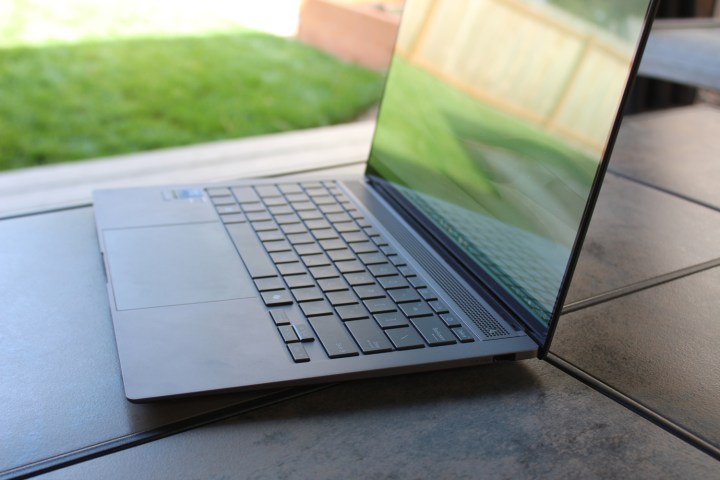 The Asus Zenbook S 14 on a table in front of a grass lawn.
The Asus Zenbook S 14 on a table in front of a grass lawn.
The Core Ultra 7 258V prioritizes efficiency over raw power. While single-core performance shows improvement, multi-core performance doesn’t significantly surpass the previous generation. Benchmarks reveal comparable or even slightly lower multi-core scores compared to last-gen H-series chips. However, the integrated Arc 140V graphics deliver noticeable gains, enabling playable frame rates in some games with appropriate settings.
| Benchmark | Asus Zenbook S 14 (Core Ultra 7 258V) | Surface Laptop 7th Edition (Snapdragon X Elite) | MacBook Air (M3) | Asus ProArt PX13 (Ryzen AI 9 HX 370 / RTX 4050) |
|---|---|---|---|---|
| Cinebench R24 (single/multi) | 112 / 452 | 105 / 826 | 141 / 601 | 116 / 897 |
| Geekbench (single/multi) | 2738 / 10734 | 2388 / 13215 | 3102 / 12078 | 2710 / 14696 |
| Handbrake | 113 | N/A | 109 | 54 |
| 3DMark Steel Nomad Light | 3240 | 1904 | 3378 | 7648 |
While not a gaming powerhouse, the Zenbook S 14’s gaming capabilities are surprisingly decent for its form factor, thanks to the Intel Arc graphics.
Webcam and Speakers
The 1080p webcam is adequate for video calls, though image quality can suffer in low light. The four-speaker setup provides decent audio for casual use, but lacks bass.
Battery Life
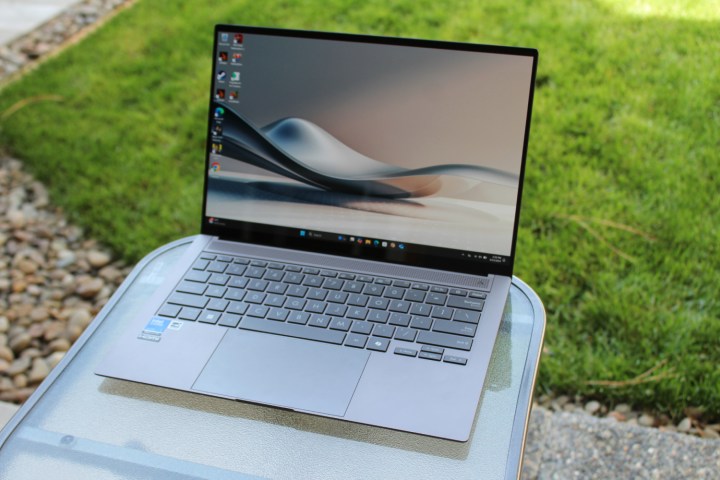 The Asus Zenbook S 14 in front of a grass lawn.
The Asus Zenbook S 14 in front of a grass lawn.
Battery life is where the Zenbook S 14 truly shines. The 72 watt-hour battery, combined with the Core Ultra Series 2’s efficiency, delivers impressive results. It achieved over three and a half hours in a demanding Cinebench rundown test and nearly 17 hours in a web browsing test, surpassing many competitors, including Snapdragon X Elite devices.
Conclusion
The Zenbook S 14 offers a compelling blend of premium design, impressive battery life, and enhanced integrated graphics. While CPU performance gains are modest, the substantial improvement in battery life is a significant advantage for everyday users. Despite minor drawbacks like the trackpad’s click mechanism and the lack of a fingerprint reader, the Zenbook S 14’s strengths, particularly its stunning OLED display and exceptional battery endurance, make it a worthy contender in the premium ultraportable laptop market.



